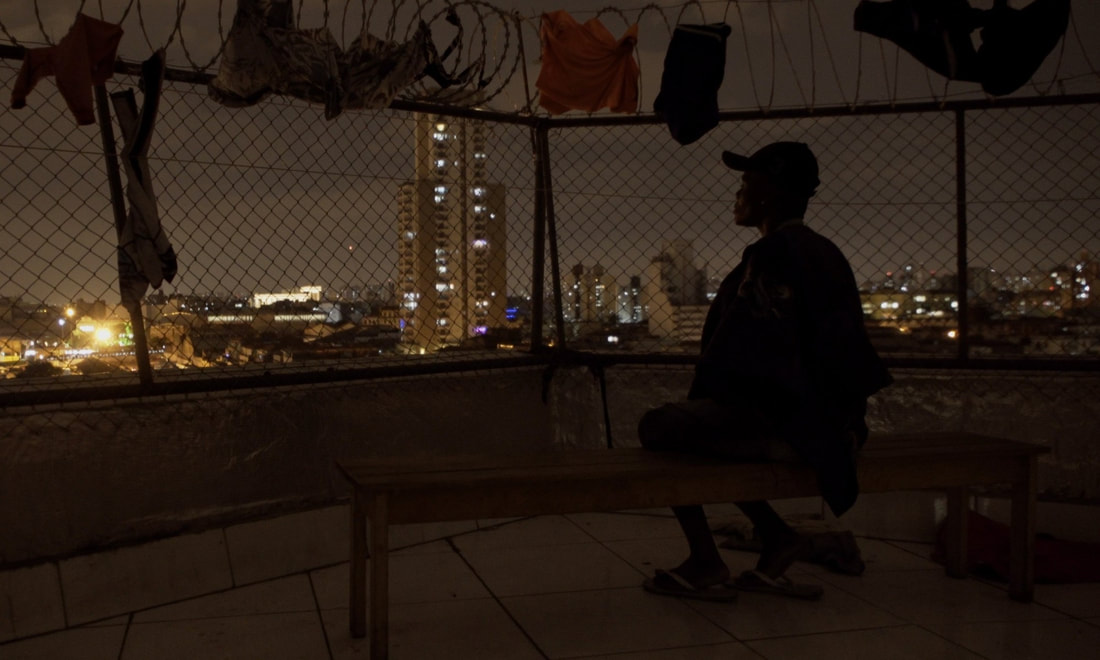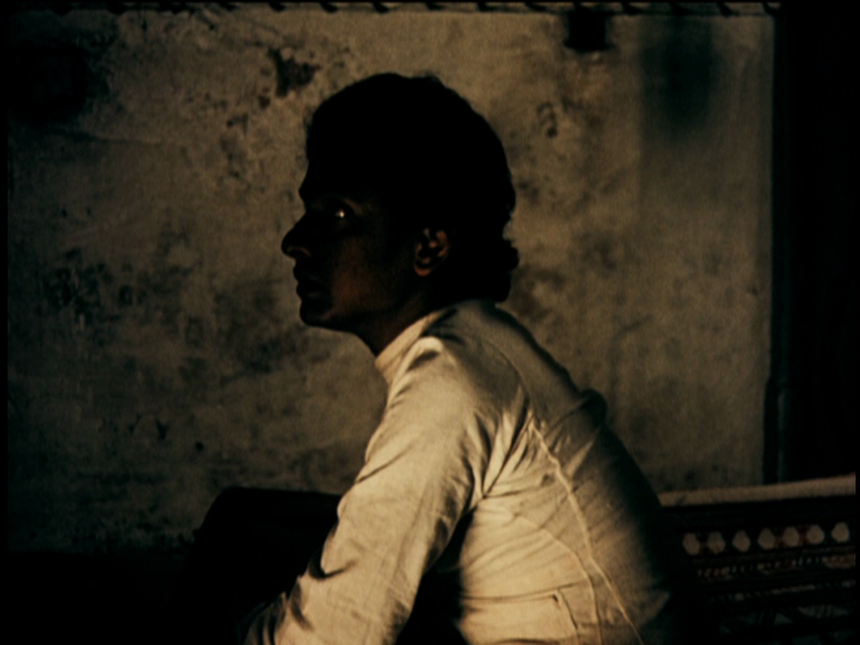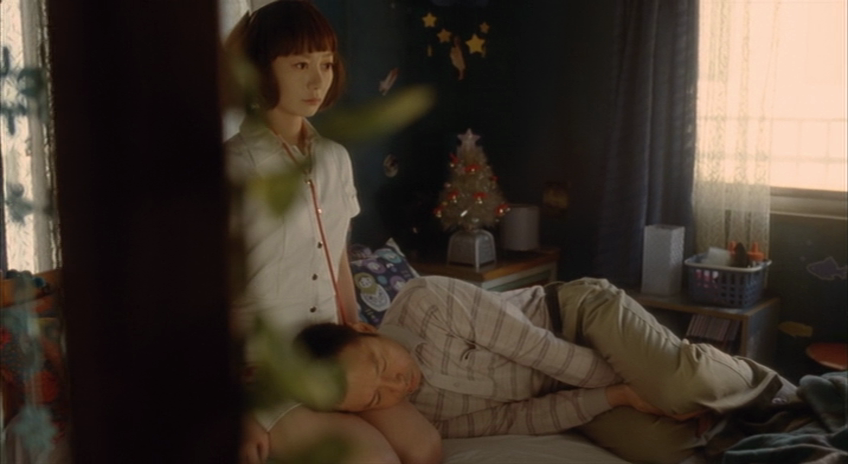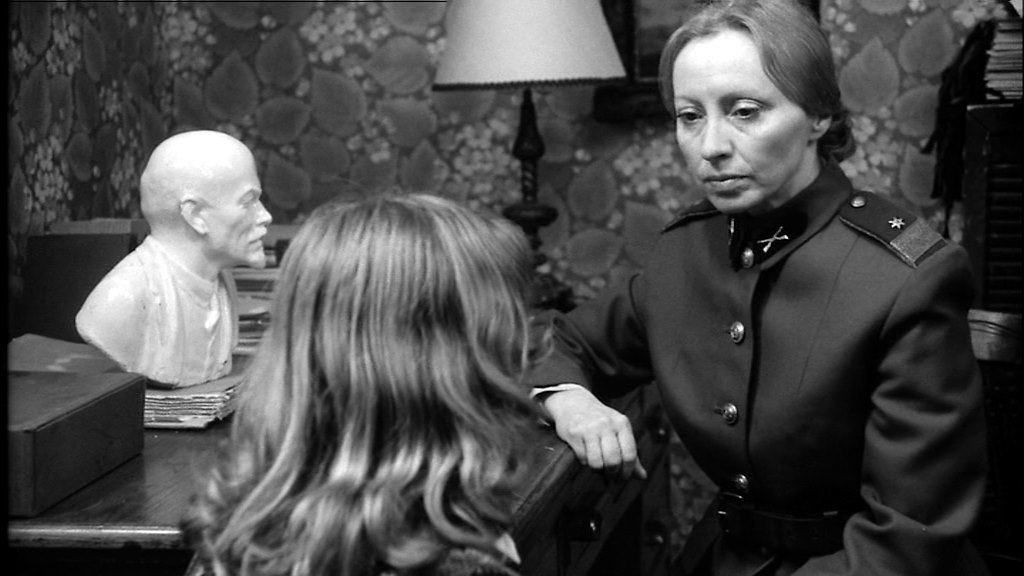|
Max Barbakow's Palm Springs is a relatively enjoyable film that skates by on its co-opted high conceptualization and the charisma of its leads. A more toned down effort from The Lonely Island overall, Palm Springs traverses the romantic comedy archetype through its clever conscription of the temporal-loop plot device - managing to live in a space that still allows lonely island to embrace their more manic impulses while also serving the emotional arch of the story related to optimism, perseverance, and of course, connection. The film remains at its best when it embraces its manic impulses, with much of the evolving romance, at times, feeling inorganic or narratively prescriptive due to a general lack of chemistry between its two leads. The two leads play off of each other well, they just lack chemistry, so while I get the need, or should I say desire, to bake-in a romantic story for the sake of accessibility, the film perhaps would have been better served without it. An affront to nihilism in some regards while also being a story of self-reliance, Palm Spring is an enjoyable experience overall which does in fact feel like the right film for the moment, given the stasis many are feeling from the pandemic
0 Comments
The potent and devastating confluence of fear and anxiety is painfully documented in Maira Buhler's Let It Burn, an observational documentary taking place in hostel-turned-social housing project for those struggling with addiction. Examining a specific temporal - the weeks leading up to an election in which the status of the hostel and its inhabitants could be directly impacted - with a deeply empathetic lens, Let It Burn is an intimate yet unobtrusive portrait of life on the fringes which manages emotional poignancy through a largely objective lens that places its subjects and the spaces they inhabit at the forefront of its candid observation. The dread-inducing reality of its subjects is palpable from start-to-finish, the communal connection which these individuals share offering an only temporary reprieve from the larger, colder aspects of society which has largely ostracized them due to their struggles. Building in tension as the film's formal framework largely remains anarchic in its documentation, Let It Burn manages to enunciate the unspoken affect of its subjects, revealing their fragility and underlying fear induced by a lack of a support system, whether it be familial or through the the state. The film's denouement - the election and consequent celebration over the skies of Sao Paolo - offers are impressionist canvas for Let It Burn in its final frames, the presumed majority celebrates the new state official while the residents of this state-run hostile lay in a purgatory of uncertainty, the fear of being shoved aside and left without any means of support looms large in the days ahead.
An elegy to wasted youth, Zhang Yuan's Beijing Bastards posits the disenfranchised and evasive attitude of adolescents as in part a bi-product of Western influence and its crude notions of individualism and self-expression which have driven a generational divide in Chinese society. A clever piece of propaganda in many regards, Beijing Bastards features a loose, meandering structural framework that moves from dingy bars to back-alley music venues, purveying the rebellious and disenfranchised youth culture which struggles with identity in a time of social transformation due to the transnational influence on native homogeneity. Beijing Bastards' primary narrative thread revolves around a musician whose been confronted with the responsibility of fatherhood, and it's thru this story arch which the film evinces its message of social and collective responsibility over individual-inspired notions of action, as the film cleverly maps paternal obligation to the larger social and communal construction of societal obligation.
A staggering work of formalist design, Mani Kaul's Duvidha is a deeply haunting ghost story in which the metaphysical world excavates and examines the nature of love beyond crude social constructions which often manage or restrict our conceptions of such an intangible force. Admittedly need to spend more time exploring the Indian New Wave but of the two films of Mani Kauls I've seen, it's clear he a major artist worth exploring. Duvidha's formal framework here is astonishing - meticulously detailed use of composition and blocking enunciates an aura of social suppression for our young protagonist who rests at the fulcrum of its story. Caught between a worldly husband whose pursuits are tied almost entirely to material gratification and that of an other-worldly spirit who pines to experience what it is to be human and experience love, Duvidha invokes a lyricism that feels singular and deeply empathetic towards its subjects, examining truths unrestrained by social constructions of marriage and legality. A masterclass in how formalism not narrative evinces a film's underlying conception and thematic intent, Main Kaul's Duvidha is a striking vision of alienation and contemplation in which its precise compositions and clinical assembly evoke a haunting ethos in which the metaphysical and natural worlds collide.
Sidney Sokhona's Nationality: Immigrant feels in many ways like a natural extension of Med Hondo's masterful Soleil Ô, displaying with a Cinéma vérité formalism the experiences of a Mauritanian immigrant in Paris seeking a better life. Pointed in its critique of the lasting reverberations of colonialism, Nationality: Immigrant extends itself to enunciate the two-pronged nature of the struggle for the immigrant, detailing not only the pervasive forces of nativism, xenophobia or out-right racism but also the suppressive nature of the managerial and/or ruling class, whom creates division among immigrant communities and the larger working class, exploiting and exacerbating the tenuous situation in an effort to maintain their elevated status and means of control. The darker aspects of assimilation are adequately explored, with Sokhona astutely recognizing that assimilation often requires a rejection or denial of one's own cultural identity, leading to acceptance under the larger monolithic culture and the legal apparatus. While largely removed from artifice, intent on providing a naturalist portrait of life for immigrants, Nationality: Immigrant's underlying message is not one rooted in pain but opportunity, as the film demonstrates through the course of its documentary-like narrative the power of communal action. It recognizes the difficulties and is dedicated to exhibiting them with an underlying truth that lacks manipulation, yet the film also ends on a relatively optimistic note in its expression of solidarity, hopeful that the racial and cultural stratas of the working class can unite for the common cause and recognize its social and economic power.
Eric Khoo's sophomore effort 12 Storeys is a safer more accessible effort than his subversive debut, Mee Pok Man, but it shows more precision in its intentions while generating a strong balance between piercing melancholy and genuinely enjoyable moments of levity. An ensemble film in which none of the three main story-lines intersect - their connection being strictly spatial (and thematic) as they live in the same government housing block - 12 Storey's uses its structural design to inform its thematic intentions. Strangers, despite occupying the same space, the three principal storylines never converge as Khoo's film aims to enunciate the diaspora and despondence of Singapore, exhibiting a society made up largely of strangers and a culture that lacks any form of identity.
More subversive than I was expecting even when considering the conceptual framework which involves a sex doll that comes to life and begins to experience the world through a human lens. There are moments in this film, particularly through use of montage, which evoke the often inexpressible pathos of urban life - densely populated but desolate, a sea of disparate souls in motion who've forgotten, in many ways, what it's like themselves to live. This juxtaposition with that of our central characterization - the sex doll who herself is learning affect - provides ample terrain for Koreeda's portrait of loneliness, one which is utterly compelling, intimate, and relatively unique. While the conception itself is rather familiar - particular throughout genre cinema - Koreeda's treatment is far more rooted in intimacy and naturalism, navigating in many ways the socially constructed dichotomy between sexual desire and mutual affection. The edifice of love as an idea is deconstructed in a way which posits that any meaningful pursuit of connection without internal-reflection is a failed endeavor. A portrait of humanism which is rarely didactic, Air Doll never expounds its intent, crafting instead a meditative portrait of urban living in which the search for connection feels insurmountable despite abundance, driven in part by the personal enclaves we create for ourselves internally
Rests at the fulcrum between historical investigation and personal exploration, defying genre classification through its complex excavation of memory and micro-history. Not nearly savvy enough with the complexities of Hungarian history to write something meaningful but this film is an exceptional work, one that enunciates the omnipresence of authoritarianism without explicit confrontation. Intimate in the semi-autobiographical narrative, the film feels deeply personal yet also collectively conscious. Agrarian society is juxtaposed against Industrialization through the use of the film's visual assembly which speaks to the larger social transformation yet the story always maintains an intimate focus on its semi-autobiographical narrative. What a film!
Ryutaro Ninomiya's understated sensibilities may project a languidness to some yet quietly smoldering underneath the enigmatic narrative schematics of his latest feature - Minori, On the Brink - lies a pensive and affecting portrait of ennui. The title character Minori is introduced as a maelstrom of youthful angst and feminist fervor, a character whose frustrations about the performative nature of social exchange and the implicit normalization of masculine privilege in Japanese culture has left her rightfully combative. Minori's discursive strategies are rooted in forthrightness and bitter honesty, finding herself consistently at odds with the cultural norms rooted in politeness and subversion of conflict. She is simply unwilling or incapable of putting on a performance about her own epistemological experiences, fearful of becoming complacent and thus complicit in the cultures normalization of feminine passivity. Never interested in expounding meaning, Ryutaro Ninomiya's latest film quietly observes and slowly excoriates its central characterization to reveal a poignant portrait of repressed emotions and the fear associated with socio-cultural-personal stagnation, illustrating in its understated naturalism the symbiotic relationship between truth and action and its counterpart deception and stagnation
An ode to cinema which concurrently manages to contextualize the art form as an essential document of cultural historiography and tool for eliciting change while also wrestling with the mythmaking intrinsic to any medium of artistic expression. This film is really a gift in many regards, Nobuhiko Obayashi's final film is bittersweet but poignant, a grand anti-war film with the technical vibrancy and creative exhibition one would expect from the great filmmaker. Synthesizing its cynicism about humankind's repetitious penchant for violence and oppression with a formal construction that is embedded in jubilation, Labyrinth of Cinema is a deeply personal reflection that is elegiac to those before him while also looking towards the future and the dream for peace and harmony through the symbiotic bond between cultural-historical education and youthful idealism.
|
AuthorLove of all things cinema brought me here. Archives
June 2023
|










 RSS Feed
RSS Feed
